Erma First gets AIP for Onboard Carbon Capture System

Erma First received Approval in Principle (AiP) from DNV for its amine absorption-based Onboard Carbon Capture (OCC) system, which was put to the test onboard a RoRo ship.The system uses amine absorption technology and a proprietary amine solvent to absorb CO2 from flue gases. When heated, the chemical reaction that occurs reverses the absorption and separates the CO2 from the solvent. The CO2 that is released is subsequently liquified and stored under cryogenic conditions onboard and the regenerated solvent can be re-used, creating a highly efficient regenerative OCC process.
Oil Tanker Fire Sparked by Lithium-ion Battery Explosion -NTSB
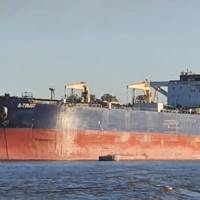
The National Transportation Safety Board (NTSB) on Thursday cited thermal runaway of a cell within a handheld radio’s lithium-ion battery as the cause of a fire on an oil tanker docked in Baton Rouge, La.The Liberian-registered oil tanker S-Trust was docked at the Genesis Port Allen Terminal on November 13, 2022, when a fire on the bridge was sparked by one of the cells in a lithium-ion battery for an ultra-high-frequency handheld radio exploding, the NTSB's investigation found.
Erma First CCUS Earns LR AIP
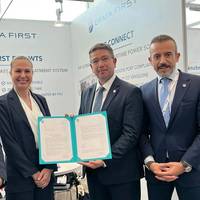
Lloyd’s Register (LR) has awarded Approval in Principle (AiP) to ERMA FIRST for its amine absorption-based Carbon Capture & Storage (CCS) system.ERMA FIRST’s CCS system uses absorption technology to mix CO2 (carbon dioxide) flue gases with a proprietary amine solvent, which is then heated to produce a chemical reaction which reverses the absorption and separates the CO2 from the solvent. The CO2 from this process is then liquified and stored under cryogenic conditions onboard with the solvent ready to use in the same process again…
Ship Carrying 3,000 Cars Burns off Dutch Coast, One Dead
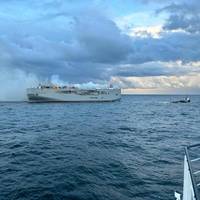
A fire blazed on a cargo ship off the Dutch coast with nearly 3,000 vehicles on board on Wednesday, killing one member of the crew and injuring several others, the coastguard said.Several crew members were forced to jump overboard after the fire began on Tuesday night on the 199-metre (655-foot) Panama-registered Fremantle Highway as it was en route from Germany to Egypt.The Indian Embassy in the Netherlands said in a social media post the fire had "resulted in the death of an Indian seafarer and injuries to the crew", and that it was in touch with family of the deceased.
Japanese Group Sees Carbon Recycled Methane as Zero-emission Ship Fuel
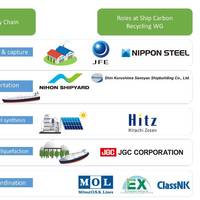
Ship Carbon Recycling Working Group of Japan's Carbon Capture & Reuse Study Group has said that carbon recycled methane produced by methanation technology can be recognized as zero-emission ship fuel.Methanation has been described as a technology for synthesizing methane, the main component in natural gas, by causing a chemical reaction between hydrogen and CO2 in a reactor vessel filled with a catalyst.It uses emitted CO2 separated and captured from industrial facilities. As the CO2 generated when combusting synthesized methane is considered to be offset by the separated and captured CO2…
Heerema Taps Techcross for Ballast Water Treatment System
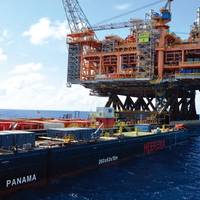
South Korean ballast water treatment system provider Techcross has won a contract to install its ElectroCleen System (ECS) aboard six vessels and barges owned by offshore installation giant Heerema Marine Contractors.According to info on Techcross' website, its Electro-Cleen System disinfects ballast water killing micro-organisms and helps reduce water pollution."The core technology of Techcross is own developed Electrolysis which is very different from other BWTS companies in terms of not using filter and disinfecting micro-organisms twice both with electrolysis and other chemical biocides.
Caterpillar Supplies Engines for Tier 4 Tug

Caterpillar Marine has supplied two Cat 3516E Tier 4 main engines to the Andrew S. The EPA Tier 4 Final and Subchapter M azimuth stern drive (ASD) tractor tug was delivered to Bisso Towboat Co.Each engine generates 3,004 bhp at 1,800 rpm and a selective catalyst reduction (SCR) system. At 6,008 bhp, Andrew S. is the most powerful Tier 4 tug on the Mississippi River.The Andrew S. measures 100’ x 38’ x 13.5’ and has an estimated bollard pull of 84 tons. Additional features of the tug include U.S.
Fuel Cells: industry examines options in race to zero emissions
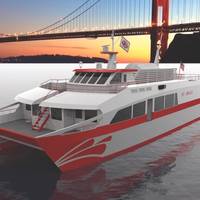
A maritime consortium, including ABS and Sandia National Laboratories, recently proved the viability of a hydrogen fuel cell ferry designed for operations in the environmentally sensitive San Francisco Bay area. The IMO’s mandate to cap the sulfur content in marine fuel at the start of next year may be the biggest regulatory change in shipping since the requirement for double hulls, but the challenge will fade in comparison to its future goals to reduce green-house gases (GHG).A year ago (April 2018)…
Grimaldi Group Orders New RoRo Vessels
In the framework of the expansion and modernisation programme of its owned fleet, as anticipated in the last months, the Grimaldi Group has signed yesterday an agreement for the construction of six ro/ro vessels, for a total investment worth over USD 400 million. The order has been awarded to the Chinese shipyard Jinling, thus consolidating an important partnership with the Neapolitan Group, the world's leading company in the ro-ro sector. The new vessels, whose delivery is expected as from 2020, will have a length of 238 metres, a beam of 34 metres and will have a gross tonnage of 64,000 tonnes. They will be able to transport over 7,800 linear meters of rolling units, equivalent to about 500 trailers.
Tech File: Propelling Hybrid Electric Solutions
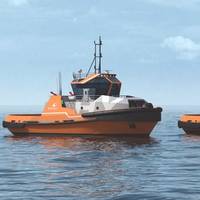
Growing interest in hybrid-electric power systems is expanding the search for new propulsion and energy-storage systems in the workboat sector, where compliance with emerging environmental regulations and a relentless pursuit of operational efficiency are driving change. To meet demands for cleaner more efficient power, owners are examining the potential for less conventional methods of energy generation and storage – such as fuel cells, lithium-ion batteries, super-capacitors, flywheels, wind and solar – to propel their vessels.
Marine Fuels: Unmasking Gas
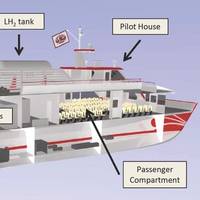
A primer on the way forward for alternative fuels for marine propulsion. By now, many of us have been passed by a garbage truck, taken a ride on an airport bus or hailed a taxi cab that is clearly labeled by their respective marketing departments that these vehicles are powered by clean burning natural gas. Even now in our own maritime industry, some trendy operators are looking to make the case for liquefied natural gas (LNG) propulsion systems, others are opting for hybrid-electric solutions, and some are even aiming for full electric configurations.
Hempel: New Coatings for Offshore Structures
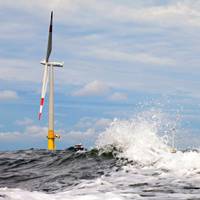
Hempel has launched two new advanced coatings specifically developed to protect the vulnerable “splash zone” areas of offshore structures. The “splash zone” is the area of an offshore asset (oil & gas platform or wind turbine, for example) that is just above the waterline and so suffers from the dual impact of atmospheric and immersion-type corrosion; as well as physical damage such as abrasion and impact, especially in areas around boat landings. Launched in Europe today, Hempadur…
Fuel Catalyst Makes Engines More Efficient
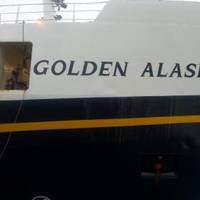
Engines are designed to run on refinery grade fuel. At the time fuel is refined, it is at its purest state; however, it deteriorates rapidly as it oxidizes and is attacked by a host of organisms (bacteria, yeast, molds), that change the molecular structure of the fuel. The Fitch Fuel Catalyst (FFC) reverses this natural aging process by inducing a chemical reaction using a patented metal alloy catalyst (not a liquid additive) that reforms diesel fuel, creating a more combustible, cleaner burning product as evidenced by the end-user comments presented in this document.
Arctic Ocean Acidification May Corrode Animals' Shells
Arctic Ocean is facing a dilemma today and that is acidification. Ocean acidification is a result or a chemical reaction which happens when seawater absorbs too much carbon dioxide from the atmosphere—reducing its acidity, carbon ion concentration and saturation. The Arctic marine species stand endangered amidst the alarming rise in ocean acidification. A new research by the NOAA's Pacific Marine Environmental Laboratory claims the disastrous effects of the drastically rising acidity levels of Arctic Ocean on the marine species. The research has revealed that the surface waters of three seas under study, could reach such levels of acidity that would threaten the ability of animals to build and maintain their shells…
On Board Fuel Blending
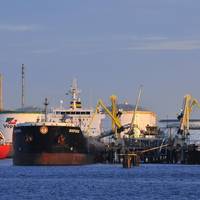
Dennis de Bruin, Marine Director at BMT Surveys, explains the current issues and new regulations concerning the on-board blending of fuels. Fuel oils are mainly a blend of oils and other components, for example; aromatic hydrocarbons such as benzene, toluene and xylene. Gasoline, for instance, is a refined product of petroleum, consisting of a mixture of hydrocarbons, additives and blending agents. Its composition varies widely depending on the crude oils used, the refinery processes, the type of product demanded and its specifications.
NOx-reduction System Ordered for Deepwater Vessel
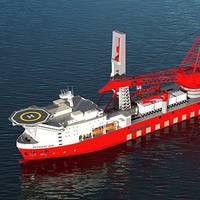
MAN Diesel & Turbo won the contract to provide a Selective Catalytic Reduction (SCR) system for each of six MAN 16V32/44CR engines that will power the Petrofac JDS 6000 deepwater derrick-lay vessel ordered in January 2014 by international oil and gas services provider Petrofac. The SCR systems and engines will be constructed at MAN Diesel & Turbo’s Augsburg, Germany facility, while the vessel will be constructed by the ZPMC yard in China using a proprietary Petrofac design. MAN Diesel & Turbo and Petrofac have also entered a 12-year service contract for the management…
Leak May Sideline New Mexico Nuclear Waste Site
It may be five years before a nuclear waste dump in New Mexico closed by a radiation leak is fully operational again, and the facility will need at least $240 million to pay for the initial recovery, a U.S. Energy Department official said on Tuesday. Operations at the Waste Isolation Pilot Plant, where radiological debris from U.S. nuclear labs and weapons sites is disposed of in a salt mine half a mile (1 km) below ground, were suspended in February after an accident released high levels of radiation and contaminated 22 workers. Findings from a preliminary investigation of the accident suggest at least one barrel of plutonium-tainted waste from Los Alamos National Laboratory near Santa Fe ruptured after being stored at the underground dump.
MAN-Powered Cargo Vessel Meets Tier III
Classification society awards SCR system emissions certificate. MAN Diesel & Turbo has been awarded a Tier III - compatibility certificate by the DNV- GL classification society for MAN 8L21/31 four- stroke engine aboard a DFDS Seaways ship with a retrofitted SCR (Selective Catalytic Reduction) system. While the engine alone meets IMO Tier II emission criteria, the SCR system for NOx reduction raises the whole system to the standard demanded by IMO Tier III rules. The vessel in question, the ‘Petunia Seaways’ is a cargo ship that sails a regular North Sea route between Gothenburg, and Immingham, respectively Ghent for DFDS Seaways. Its SCR system greatly reduces the level of nitrogen oxides (NOx) from the engine’s exhaust gas.
Proper Engine Maintenance Leads to Significant Cost Savings
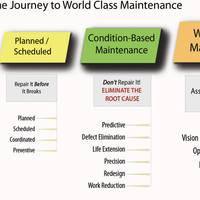
Engine Maintenance trumps a tough economy. Bypass oil filtration technology is one way to get there. For the past several years, ferry service and tugboat operators have had one eye on fuel costs and the other on the economy. But worry as they might, there’s not much, if anything, that operators can do to effect change to the economy or to reduce the price of fuel. What they can do, however, is effect change to reduce their company’s operating costs and that’s where proper engine maintenance can make a significant difference.
Fire Protection for LNG-fueled Ships

There are roughly 30 liquified natural gas (LNG)-powered marine vessels currently active in today’s global seas, with some estimates showing approximately 30 new builds expected by 2014. With new commitments and orders for LNG-powered ships taking place every month, the potential that LNG-powered vessels will play an important part in shaping the future of the maritime industry is no longer speculation – it is now a fact. Helping to drive the switch from diesel, steam and even…
Finding the Ideal Biodegradable Marine Lubricant
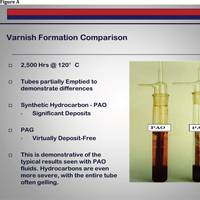
In December 2013, the EPA through its Vessel General Permit (VGP) will introduce the mandatory use of “Environmentally Acceptable Lubricants” or EALs. These products include the lubricating oils that are directly used in applications referred to as “oil to sea interfaces” where the only thing holding the oil from entering the water is a simple seal or gasket. Understanding what this all means to you is important. Bio-degradability rating of 60% or more in 28 days (the minimum criteria to also be classified as “readily biodegradable”).
Ocean Acidification Putting Coastal Jobs at Risk
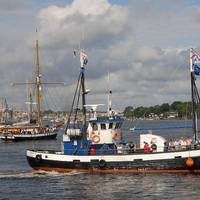
A NOAA study finds that ocean acidification is accelerated in nutrient-rich areas putting marine resources, coastal economies, at risk. Carbon dioxide released from decaying algal blooms, combined with ongoing increases in atmospheric carbon emissions, leads to increased levels of ocean acidification, and places additional stress on marine resources and the coastal economies that depend on them, according to a new study published by NOAA. Ocean acidification occurs when the ocean absorbs carbon dioxide from the atmosphere or from the breakdown of organic matter…
DMAIB Publishes 'Maersk Champion' Fire Report
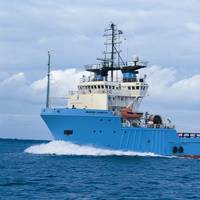
The Danish Maritime Accident Investigation Board (DMAIB) reports on the fire that occured on board in early 2012. On 9 January 2012, a fire broke out in the ship’s hospital of the AHTS vessel Maersk Champion that was engaged in tanker lifting/heading control off the Brazilian coast. The cause of the fire was self ignition by a chemical reaction between chlorine-containing granules and other chemical substances in a plastic box with medicine and chemical residues located in the ship's hospital.






